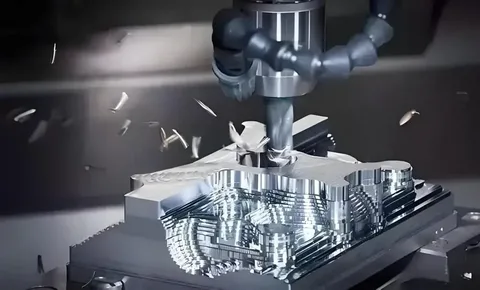In 2025, the point-of-sale (POS) system is no longer just a tool for processing transactions. It has evolved into a multifaceted operational hub, streamlining nearly every aspect of a business—from inventory to customer relationship management. One of the most notable transformations lies in how POS systems are revolutionizing shift management, particularly for the retail, hospitality, and service sectors.
As businesses grapple with labor shortages, fluctuating demand, and increasing customer expectations, the integration of intelligent shift management tools within modern POS systems is reshaping the way teams operate. In this article, we’ll explore how these innovations are improving employee productivity, reducing administrative burden, and empowering managers to make real-time, data-driven decisions.
What Is Shift Management?
Shift management involves organizing employee work hours, ensuring the right number of staff are scheduled at peak times, and maintaining compliance with labor laws. Traditionally, this task was handled manually via spreadsheets, whiteboards, or simple scheduling software.
However, manual shift scheduling is prone to human error, time-consuming to maintain, and lacks the flexibility to adapt quickly to changes. That’s where integrated POS systems with shift management capabilities step in—offering automation, analytics, and agility.
The Evolution of POS Systems in 2025
In 2025, POS systems are smarter, faster, and more interconnected than ever. With the rise of AI, machine learning, and cloud-based platforms, modern POS systems are no longer confined to cash registers or checkout counters. They’re accessible on tablets, smartphones, and other smart devices—making them essential tools for both managers and employees.
POS systems today combine sales tracking, employee performance analytics, time tracking, labor forecasting, and schedule automation into one centralized interface. This seamless integration ensures smoother operations and more efficient workforce management.
Key Features of POS-Based Shift Management in 2025
1. Automated Scheduling
Modern POS platforms use AI to create optimal shift schedules based on sales forecasts, employee availability, and historical performance. For example, if a restaurant experiences a spike in orders every Friday evening, the POS system automatically schedules more staff during that window.
This eliminates the guesswork from scheduling and ensures that the right number of employees are present when needed.
2. Real-Time Shift Adjustments
In dynamic environments, shift changes are inevitable. Employees might call in sick, arrive late, or request last-minute time off. Advanced POS systems allow managers to make real-time changes, notify employees instantly via mobile alerts, and reassign shifts without disrupting business operations.
3. Mobile Access and Employee Portals
Employees can now view schedules, request shift swaps, and clock in/out directly from their mobile devices. These self-service portals empower staff while reducing the administrative burden on managers.
Some systems even offer geofencing to ensure employees clock in only when they’re physically at work.
4. Labor Cost Forecasting
By analyzing trends in sales and labor costs, POS systems provide predictive insights that help managers schedule more cost-effectively. For instance, if a retail store is overstaffed during a low-sales period, the POS system can suggest schedule adjustments to avoid unnecessary labor costs.
5. Time and Attendance Tracking
Modern POS platforms integrate with biometric scanners, facial recognition, and GPS-based apps to track employee time with pinpoint accuracy. This minimizes “buddy punching” and time theft, ensuring compliance with labor regulations.
6. Compliance and Labor Law Integration
Regulatory compliance is a critical concern for many businesses. POS systems in 2025 are designed to automatically alert managers when they’re about to breach labor laws—such as scheduling an underage worker for too many hours or not providing adequate breaks.
Industry Applications: How POS Shift Management Impacts Different Sectors
1. Restaurants and Cafes
In the food service industry, where demand fluctuates wildly, POS shift management systems offer incredible value. Restaurants use POS tools to forecast busy hours, assign shifts, and even track employee performance (such as table turn times or upsell rates). The result? Faster service, reduced labor costs, and happier customers.
2. Retail Stores
For retailers, especially those operating in malls or shopping centers, staffing needs change depending on promotions, holidays, and foot traffic. POS-based shift planning allows store managers to allocate staff based on real-time sales data, preventing understaffing during peak hours.
3. Salons and Spas
Service-based businesses like salons rely heavily on appointment-based scheduling. POS systems allow seamless coordination between employee schedules and customer bookings. This reduces wait times and improves the overall customer experience.
4. Hotels and Hospitality
In hotels, shift management affects front-desk staff, housekeeping, and room service teams. POS systems offer centralized dashboards for supervisors to view, manage, and adjust shift assignments across departments. It also helps ensure 24/7 coverage without overlapping shifts or burnout.
Benefits of POS-Integrated Shift Management
1. Increased Efficiency
By automating scheduling and reducing manual tasks, managers save hours each week. Employees also waste less time waiting for shift assignments or approvals.
2. Improved Employee Satisfaction
When employees have transparency and input into their schedules, morale improves. Many POS platforms now include preference-based scheduling and fairness algorithms that distribute shifts evenly among staff.
3. Reduced Labor Costs
AI-powered forecasting ensures that businesses are neither overstaffed nor understaffed. This optimization cuts down on overtime and improves profit margins.
4. Enhanced Communication
Integrated messaging tools within POS systems keep staff informed in real-time. Whether it’s shift reminders, policy updates, or last-minute changes, communication is seamless and documented.
5. Data-Driven Decision Making
POS systems collect vast amounts of data—everything from individual employee performance to customer traffic patterns. This enables managers to make smarter, faster decisions regarding staffing.
Challenges and Considerations
While the advantages are clear, implementing POS-based shift management isn’t without its challenges:
- Training & Adoption: Some employees may resist new technology or find it difficult to adapt. Proper training is essential.
- Data Privacy: With GPS tracking and biometric data involved, businesses must ensure robust data privacy policies are in place.
- System Integration: Businesses using multiple software platforms may struggle to integrate all tools into a single POS system.
Fortunately, most leading POS providers in 2025 offer API integrations, training modules, and GDPR-compliant security standards to address these issues.
Leading POS Providers with Shift Management Capabilities in 2025
Here are a few platforms leading the way in shift management innovation:
- Square for Teams – Offers intuitive employee scheduling, payroll integration, and mobile time tracking.
- Toast POS – Designed for restaurants with built-in labor management and performance analytics.
- Shopify POS – Includes scheduling add-ons for retail staff and syncs with eCommerce data.
- Lightspeed – Provides employee performance tracking and customizable scheduling for various industries.
- Clover – Integrates time tracking, compliance alerts, and scheduling into one easy-to-use platform.
The Future of POS Shift Management
Looking ahead, we can expect POS systems to become even more predictive and personalized. Future capabilities may include:
- AI-Generated Weekly Rosters Based on Weather Forecasts
- Integration with Wearables for Real-Time Health & Productivity Monitoring
- Employee Sentiment Analysis for Burnout Prevention
- Voice-Assisted Schedule Adjustments for Managers on the Go
These emerging features will further reduce friction in workforce management and contribute to a more responsive, agile, and employee-friendly work environment.
Final Thoughts
In 2025, businesses that embrace POS-integrated shift management gain a competitive edge in efficiency, compliance, and employee satisfaction. By leveraging smart technology, managers can make better staffing decisions, respond to change quickly, and foster a more productive workforce.
What was once a painful and time-consuming process is now streamlined and optimized—thanks to the evolution of POS systems.
Whether you’re running a boutique retail shop, a bustling café, or a large hotel chain, it’s clear: the future of shift management is here—and it’s built into your POS.
















Leave a Reply